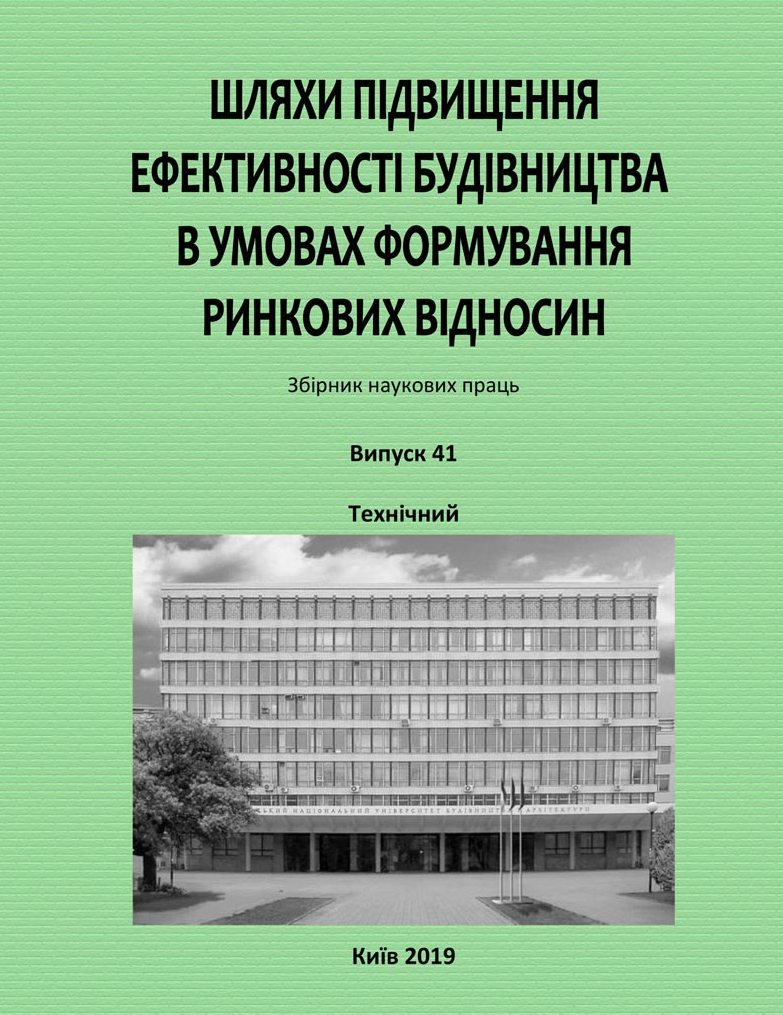Problems of the effectiveness of organizational and technological solutions in architecture at the present stage
DOI:
https://doi.org/10.32347/2707-501x.2019.41.29-38Keywords:
efficiency, recreational environment, innovation, investment, architectural solutionsAbstract
In science and specialized literature, the technical side of creating works of architecture is not considered; more attention is paid to the aesthetic features of new buildings and structures. This article discusses the problems that accompany activities in the field of architecture and construction and related to the fact that it is not defined what is it in the conditions of market relations: creativity, creativity and production, production and entrepreneurship, or administrative and managerial activities? How to relate to current but outdated regulatory requirements? Is everything provided for in the Copyright Law? These are technical problems of the investment process in construction, but they significantly affect the quality of design decisions, including architectural and artistic solutions of modern architecture.
It was determined that the technical factor that becomes an obstacle to making optimal decisions in architecture is the absence in the Law of the Republic of Belarus “On Copyright and Related Rights” of a provision on the extension of the architect’s copyright to conceptual decisions. This is important, since there is no such type of documentation as a draft design in the Law. Pre-investment documentation has appeared in which the outline solution can be included. Article 6 of the Law “Objects of Copyright” refers only to “drawing, sketch, plan, drawing”, as well as “layout, model, construction” and further generalizing the concept of “works of architecture, urban planning and landscape gardening art”. Article 19 of the Law “The Right to Participate in the Implementation of an Architectural Project” refers only to an “architectural project”, excluding from the field of copyright problems the most important results of creative searches - a conceptual architectural solution, which is usually contained in pre-project (pre-investment) documentation. Therefore, the absence in the law of a provision on authorship of the concept of an architectural solution restrains the development of architecture at the initial stage of the creative process, affecting the quality of architecture. There is also a decrease in the importance of specialists holding the positions of chief architects of cities and regions and the fact that the organizational and technical problems of modern architecture are mainly determined by the processes of development of the economic foundations of society, but these problems can be regulated.
References
Oficial'nyj Internet-portal Prezidenta Respubliki Belarus'. – URL: http://http://president.gov.by/ru/official_documents_ru/view/kommentarij-k-ukazu-365-ot-09102017-17269/. – Data dostupa: 05.11.2017.
Oficial'nyj Internet-portal Prezidenta Respubliki Belarus'. – Rezhim dostupa: http://president.gov.by/ru/official_documents_ru/view/dekret-7-ot-23-nojabrja-2017-g-17533 /. – Data dostupa: 01.12.2017.
Sharshukov, S. (2019) Arhitektory strany obespokoeny agressivnoj zastrojkoj. Kak oni predlagayut borot'sya. – Rezhim dostupa: https://realty.tut.by/news/building/631870.html. – Data dostupa : 7.4.2019.
Downloads
How to Cite
Issue
Section
License
Copyright (c) 2020 S. Sergachev, I. Skripchenko

This work is licensed under a Creative Commons Attribution 4.0 International License.
Authors who publish with this journal agree to the following terms:
- Authors retain copyright and grant the journal right of first publication with the work simultaneously licensed under a Creative Commons Attribution License that allows others to share the work with an acknowledgement of the work's authorship and initial publication in this journal.
- Authors are able to enter into separate, additional contractual arrangements for the non-exclusive distribution of the journal's published version of the work (e.g., post it to an institutional repository or publish it in a book), with an acknowledgement of its initial publication in this journal.
- Authors are permitted and encouraged to post their work online (e.g., in institutional repositories or on their website) prior to and during the submission process, as it can lead to productive exchanges, as well as earlier and greater citation of published work (See The Effect of Open Access).

